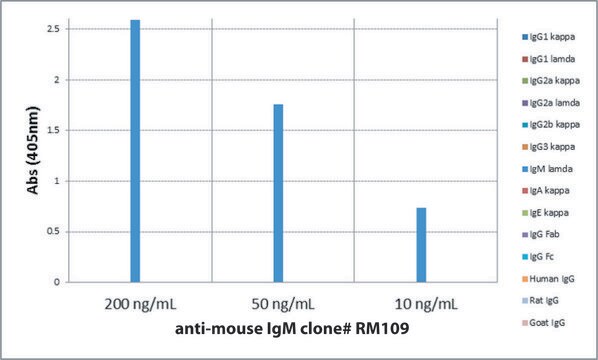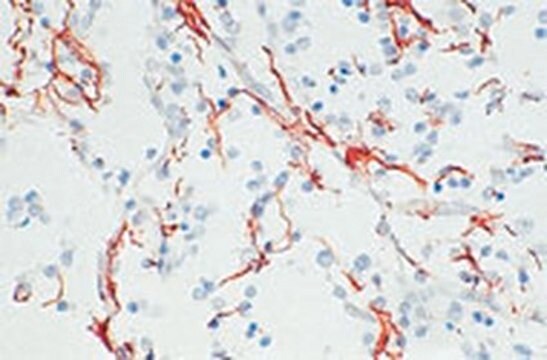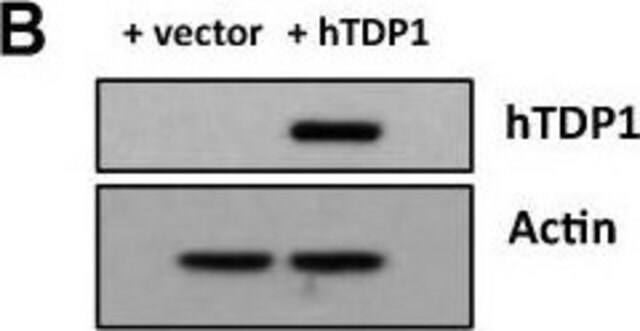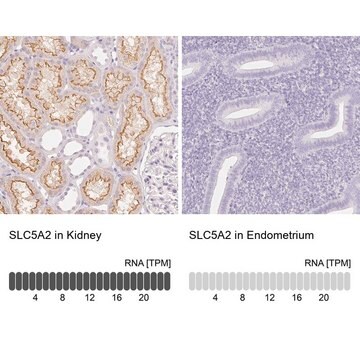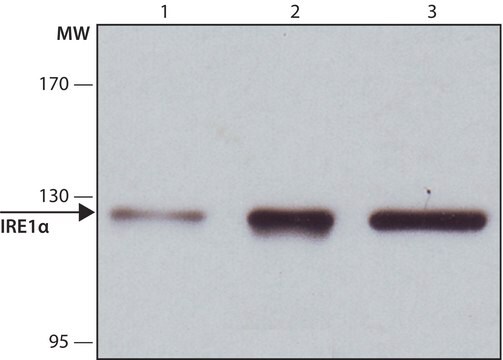ZRB1962
Anti-Calpain-1 Antibody, clone 1H14 ZooMAb® Rabbit Monoclonal

recombinant, expressed in HEK 293 cells
Sinonimo/i:
EC:3.4.22.52;Calcium-activated neutral proteinase 1;CANP 1;Calpain mu-type;Calpain-1 large subunit;Cell proliferation-inducing gene 30 protein;Micromolar-calpain;muCANP
About This Item
Prodotti consigliati
Origine biologica
rabbit
Livello qualitativo
Ricombinante
expressed in HEK 293 cells
Coniugato
unconjugated
Forma dell’anticorpo
purified antibody
Tipo di anticorpo
primary antibodies
Clone
1H14, recombinant monoclonal
Descrizione
1H14 Clone
Nome Commerciale
ZooMAb® learn more
Stato
lyophilized
PM
calculated mol wt 81.89 kDa
observed mol wt ~80 kDa
Purificato mediante
using Protein A
Reattività contro le specie
mouse, human
Reattività contro le specie (prevista in base all’omologia)
rat
Confezionamento
antibody small pack of 25 μL
Caratteristiche più verdi
Waste Prevention
Designing Safer Chemicals
Design for Energy Efficiency
Learn more about the Principles of Green Chemistry.
Convalida avanzata
recombinant expression
Learn more about Antibody Enhanced Validation
sustainability
Greener Alternative Product
tecniche
immunocytochemistry: suitable
immunohistochemistry: suitable
western blot: suitable
Isotipo
IgG
Sequenza dell’epitopo
N-terminal half
N° accesso ID proteina
N° accesso UniProt
Categoria alternativa più verde
Condizioni di spedizione
ambient
Temperatura di conservazione
2-8°C
modifica post-traduzionali bersaglio
unmodified
Informazioni sul gene
human ... CAPN1(823)
Descrizione generale
Specificità
Immunogeno
Applicazioni
Evaluated by Western Blotting in MOLT-4 cell lysate.
Western Blotting Analysis: A 1:1,000 dilution of this antibody detected Calpain-1 in MOLT-4 cell lysate.
Tested applications
Western Blotting Analysis: A 1:1,000 dilution from a representative lot detected Calpain-1 in lysates from C2C12 and Jurkat cells, and Mouse kidney lysate.
Immunohistochemistry (Paraffin) Analysis: A 1:100 dilution from a representative lot detected Calpain-1 in human small intestine tissue sections.
Immunocytochemistry Analysis: A 1:100 dilution from a representative lot detected Calpain-1 in MCF-7 cells.
Note: Actual optimal working dilutions must be determined by end user as specimens, and experimental conditions may vary with the end user
Evaluated by Western Blotting in MOLT-4 cell lysate.
Western Blotting Analysis: A 1:1,000 dilution of this antibody detected Calpain-1 in MOLT-4 cell lysate.
Descrizione del bersaglio
Stato fisico
Stoccaggio e stabilità
Note legali
Esclusione di responsabilità
Non trovi il prodotto giusto?
Prova il nostro Motore di ricerca dei prodotti.
Codice della classe di stoccaggio
11 - Combustible Solids
Classe di pericolosità dell'acqua (WGK)
WGK 1
Punto d’infiammabilità (°F)
Not applicable
Punto d’infiammabilità (°C)
Not applicable
Scegli una delle versioni più recenti:
Certificati d'analisi (COA)
Non trovi la versione di tuo interesse?
Se hai bisogno di una versione specifica, puoi cercare il certificato tramite il numero di lotto.
Possiedi già questo prodotto?
I documenti relativi ai prodotti acquistati recentemente sono disponibili nell’Archivio dei documenti.
Il team dei nostri ricercatori vanta grande esperienza in tutte le aree della ricerca quali Life Science, scienza dei materiali, sintesi chimica, cromatografia, discipline analitiche, ecc..
Contatta l'Assistenza Tecnica.

